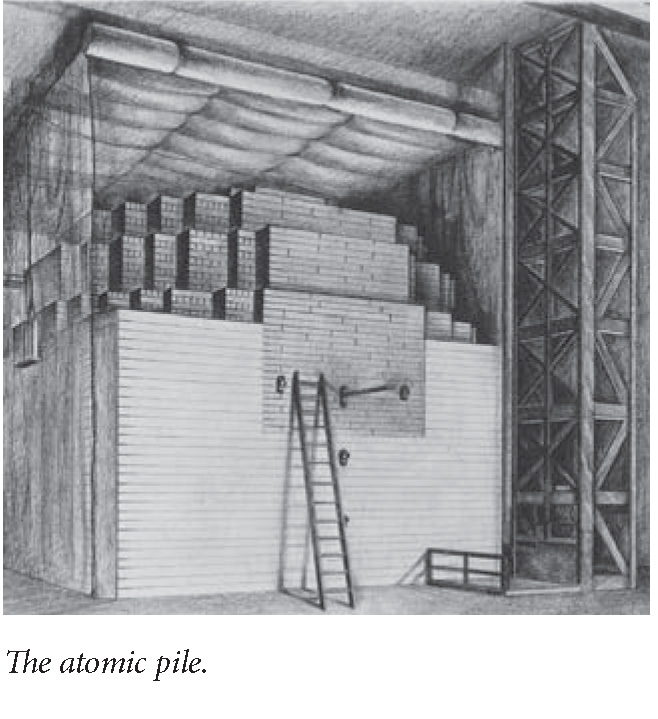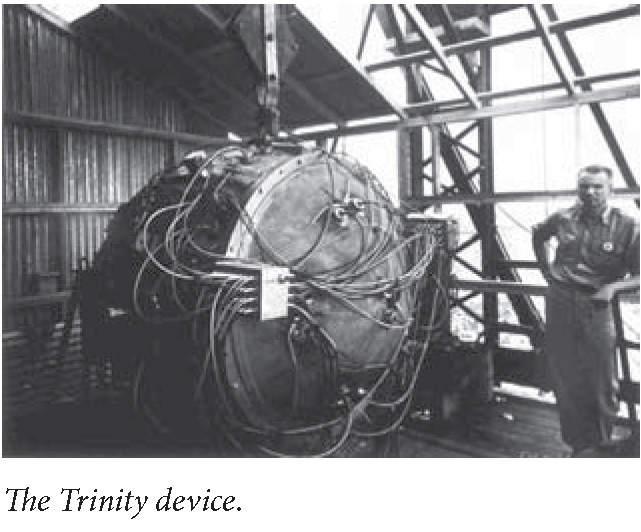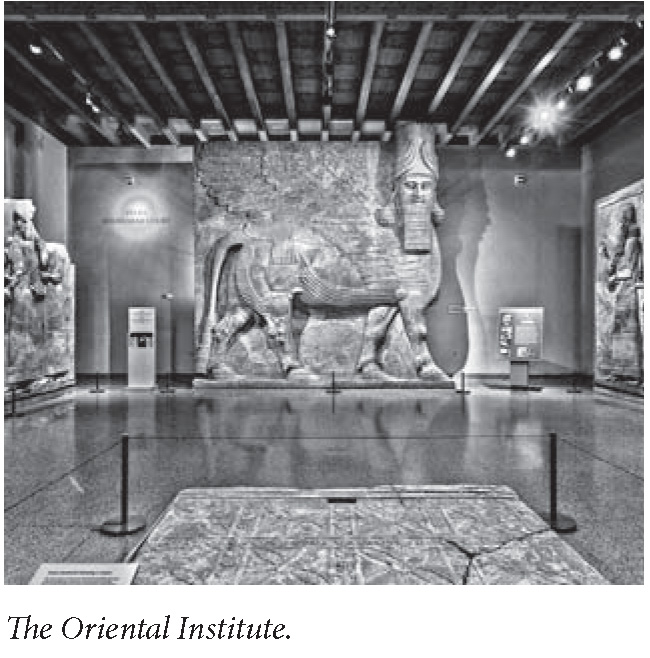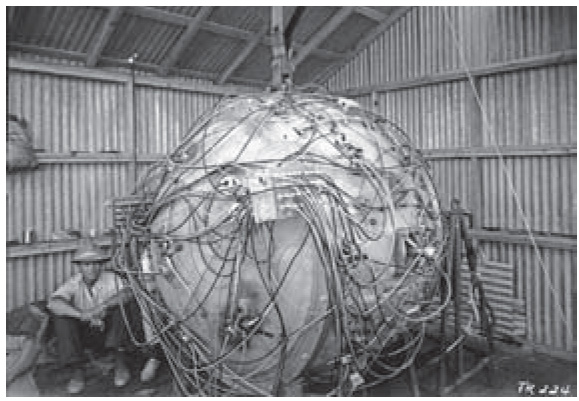One morning a few years back, I happened to be walking along South Ellis Avenue on the University of Chicago campus when I noticed a plaque marking the site where Enrico Fermi and Leó Szilárd and their colleagues achieved the world’s first nuclear chain reaction, on December 2, 1942, right there inside what were then the squash courts, tucked under the bleachers of the university’s Stagg Field. Drifting into a nearby building, I came upon a little commemorative display, including a drawing of the atomic pile itself, a remarkably makeshift-looking assemblage  of graphite blocks housing uranium pellets which bore an uncanny resemblance to some sort of Babylonian temple from the times of Nebuchadrezzar (or, anyway, Indiana Jones’s approximation of same), and then, as well, a photograph of the Trinity device, direct descendant of that Chicago pile whose detonation in the New Mexico desert a mere two and a half years later, just as the sun was rising on the morning of July 16, 1945, signaled the astonishing triumph of the Manhattan Project and of course plunged mankind into a portentously new era all its own. (“Now I am become death, destroyer of worlds,” the project’s leader, J. Robert Oppenheimer, subsequently recalled thinking as he watched the mushroom cloud rising high into the blackened sky, famously invoking that harrowing line from the Hindu Bhagavad Gita.)
of graphite blocks housing uranium pellets which bore an uncanny resemblance to some sort of Babylonian temple from the times of Nebuchadrezzar (or, anyway, Indiana Jones’s approximation of same), and then, as well, a photograph of the Trinity device, direct descendant of that Chicago pile whose detonation in the New Mexico desert a mere two and a half years later, just as the sun was rising on the morning of July 16, 1945, signaled the astonishing triumph of the Manhattan Project and of course plunged mankind into a portentously new era all its own. (“Now I am become death, destroyer of worlds,” the project’s leader, J. Robert Oppenheimer, subsequently recalled thinking as he watched the mushroom cloud rising high into the blackened sky, famously invoking that harrowing line from the Hindu Bhagavad Gita.)

A few minutes later, and not a hundred yards farther along on my morning amble, I came upon the university’s storied Oriental Institute, no mean pile itself, and wandered on in.
On the spur of the moment I inquired of the receptionist whether my old pal the eminent Assyriologist Matthew Stolper might be around in his attic office upstairs, and as it turned out he was.

I’ve written about Professor Stolper before. He’s the fellow whose day (and night and weekend) job consists of methodically making his way, one instance at a time (and often for months at a time per instance), through the thousands upon thou-sands of Shredded Wheat–sized, chicken-scratch-festooned cunei-form clay tablets that make up the astonishing treasure trove that is the Persepolis Fortification Archive.
Originally gathered following a major discovery by archeaologists sent out from the Rockefeller-financed Oriental Institute near what is now Shiraz, in southwestern Iran (the find, as it happens, having first been reported on March 4, 1933, the very day of the inauguration, back in America, of President Franklin D. Roosevelt, who would go on to order the construction of the atom bomb in question, and just a week after the Reichstag fire, in Berlin, which Chancellor Hitler would use as his excuse for consolidating power, a situation whose horrible compounding consequences would come to form the rationale for Roosevelt’s own eventual order), the haul would turn...
You have reached your article limit
Sign up for a digital subscription and continue reading all new issues, plus our entire archives, for just $1.50/month.
Already a subscriber? Sign in





